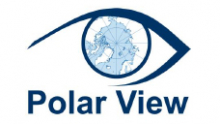
Objectives of the service
The objective of the ISABELIA feasibility study was to evaluate the technical feasibility and economic viability of an integrated solution supported by at least two space assets providing services to improve the maritime safety in the Baltic Sea by enhancing the situational awareness in support of preventing collision and grounding of vessels, and minimising consequential damage in case of an accident. Using a set of focus areas presented by the partners in the study consortium as the starting point, the services were identified from the needs of the stakeholders involved in maritime traffic in the Baltic Sea. One of the compelling needs expressed by the users was to have a better understanding of the live and near term ice conditions in the Baltic Sea, in order to assess the risks associated with entering these areas.
Being an ESA programme, the study focussed on those value adding services which included the use of satellite data and capabilities from at least two space assets (satellite navigation, earth observation, satellite communication and/or technologies from human space flight).
The goal was to identify the elements needed to build a sustainable service that would satisfy these needs. The process towards the targeted operational service(s) would go through a Demonstration Project, which forms the follow-up of the Feasibility Study provided that the Feasibility Study has identified and defined such a viable service.
The outcome of the study includes the specification of a system that would provide the desired service and a roadmap describing how the goal of establishing a sustainable service is planned to be achieved. This roadmap is based on the findings that have been elaborated in the project.

Concept overview of the ISABELIA providing situational awareness services to users in support of maintaining and improving safety of maritime traffic in the Baltic Sea.
Users and their needs
Main (potential) users are the winter navigation authorities and VTS operators in Finland, Sweden and Estonia. The other target user group is the shipping companies that have routes to the Bay of Bothnia and to St Petersburg and other ports in the Eastern part of the Gulf of Finland.
Countries of the targeted users: Finland, Sweden, the Netherlands to start with. All vessel operators sailing in the Baltic, irrespective of vessel operator country, are potential users (and customers).
Service/ system concept
The Dynamic Ice risk map service provides the users with a map of areas or segments along the planned route indicating the effects of the ice conditions in these areas. The information – ship position and speed - is gathered from the terrestrial AIS network, which is well developed around the Baltic Sea. Slowdowns are detected by comparing the current ship speed with normal velocity of the ship on open water conditions. By combining the information from several ships in the area, an aggregated view is obtained. This view is then presented to the maritime authorities and to ships at sea over satellite communication links. The Dynamic Ice risk map service can easily be combined with a met/ocean service showing wave forecasts along the route and indicating areas of potentially dangerous wave heights.
The Grounding warning service is twofold: one is similar to the Collision warning service alerting the VTS operator in case of a ship is foreseen to run aground taking into account the draft of the ship, speed, waves and water level. The other variant is based on a system for exchanging route plans between ship and shore where a check of the planned route is performed on a dedicated server.
The Collision warning service uses a statistical model of ship movements to estimate and indicate when and where there is an increased risk of two or more ships coming too close to each other.
Space Added Value
Satellite based positioning is an essential part of the AIS information system. The proposed services will be based on the AIS equipment and messaging which is presently installed on vessels.
Users at sea (also in the Baltic Sea) often use routes that bring them outside of the coverage areas of the terrestrial communication networks for significant periods of time. During these conditions the only available communication channel is over satellite links. To satisfy the need of having updated information if the conditions change, satellite communications have to be utilised.
EO data, especially SAR data, is operationally used to monitor sea ice and could be utilised in future development to make an improved risk map related to ice conditions.
Current Status
Based on an evaluation of the three service lines (Dynamic Ice Risk including Met/Ocean information, Collision risk and Grounding risk service line)it was concluded that the Dynamic Ice Risk service appears to provide the most added value for the shipping industry and demonstrates the most promising business opportunity. Considering the other two services, it was found that there are other solutions already available in these sectors and no obvious competitive edge could be identified. Thus the efforts towards a possible next step are concentrated on the Dynamic Ice Risk service.
As such, the ISABELIA Feasibility Study is completed, but efforts are on-going to identify a suitable organisation to take the role as the Service provider of the future operational and sustainable service.
Prime Contractor(s)
Subcontractor(s)







